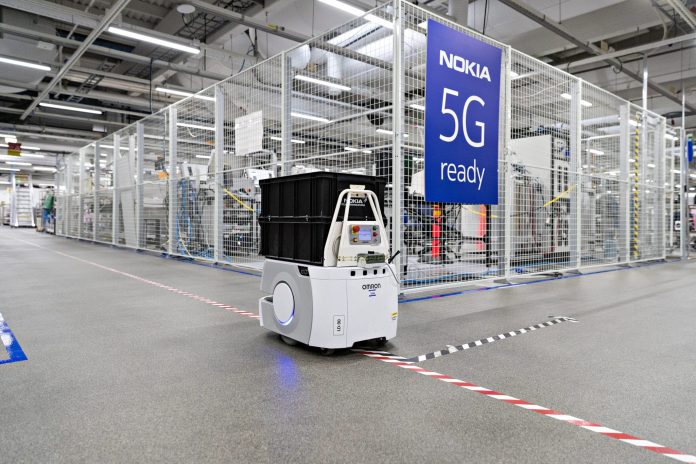The magic in private cellular networks comes with the radio, and not with the core, says Nokia. And the magic in the radio cannot be so easily copied or imitated; it takes decades of graft, it says, honed through five generations of cellular at the sharp end of telecoms, to produce a private networking solution that stands up to industrial usage. The implication is sub-optimal efforts by new upstart rivals in the sector are muddying the water for private LTE and 5G.
This is Nokia’s position, as the old telecoms supply chain mutates and multiplies, making its way into private enterprise premises, in service of a million-fold increase in network contracts. While it hardly constitutes fighting talk, and while Nokia might (with good strategy) have the rub of the green in private wireless so far, the Finnish vendor has clearly spied the new competition across the way – and felt compelled, to an extent, to set the record straight.
Or at least to drop the needle on its own version. Speaking last week with Enterprise IoT Insights, as an aside in a longer conversation about future management scenarios for private LTE and 5G networks (look out for the upcoming report on regional enterprise NOCs for private networks), it said customers are returning to Nokia after having their fingers burned on rival gear from newer-breed suppliers.
Specifically, its response was to a question about the commoditization of LTE and 5G for enterprises, into almost Wi-Fi-like box sales, and whether abstraction of inherent complexity in cellular somehow emasculates the traditional telco set – whether, in this world of plug-and-play cellular, new telco startups and old industrial familiars can be telecoms suppliers and enterprises can be network ‘operators’, and the ancient magic is gone.
No way, was the response. Radio play is a hard game, the story goes. “The reality is not everybody can make a radio. It is not like Wi-Fi – you can’t just buy a chipset from Qualcomm, get a piece of software and a reference design, and subcontract to a Tawianese manufacturer to build it for you.”
Noting the crossfire, as well, from new core network providers, teaming up with modish small cell specialists on radio-access network (RAN) supply, or else developing their own RAN solutions, Stephane Dauble, head of marketing for enterprise solutions at Nokia, remarked: “That is not the way it works with radio. It is more complex.” He suggested certain newer suppliers – going unnamed – are even passing off femtocell-based RAN solutions as industrial-grade.
Dauble commented: “In private wireless, the core network is more commoditized; there are a lot of startups out there. But really, the quality is in the radio. The thing that is difficult, which is different from Wi-Fi, is the radio. These companies are trying to build their own radios, to expand their capabilities. But when you see what they are building… they’re effectively using femto chips from Qualcomm, creating solutions they expect to deliver LTE performance in a factory.
“And they are wrong. They’ve never been radio players; they don’t know how to programme a scheduler, say – which is what makes the private LTE network reliable. Whereas companies like Nokia, Ericsson, Huawei have been doing this for 30 years. And although LTE and 5G standards in 3GPP are well defined, there is a big difference between what you get in terms of performance in the field from a small company versus from Nokia or Ericsson.”
He went on: “Customers come back to us, having tried these others. They tell us these suppliers told them private LTE was going to be more reliable than Wi-Fi, but didn’t get what was written on the label. And we are starting to understand why – because a femto is great for a mobile operator with multiple layers, selling for a home or a small shop. But a factory environment is as tough as the middle of London. You need a radio solution to reflect that.”

